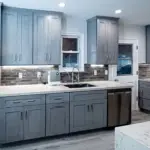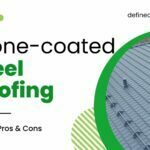P-trap vs S-trap differs in terms of configuration how drain exists. In a typical S-trap configuration, the drainpipe drops down from the sink and then loops over before existing downward. In comparison to S-Trap, in the configuration of P-trap; the drain do come down from the sink but it goes horizontally before existing downwards instead of making a loop.
Anyhow, the working and configuration of P-trap and S-trap is not that simple. So, if you’re asking which is better P-trap or S-trap; I’ve tried to summarize some important points to help you with the decision.
So, let’s delve in:
What are S-trap and P-trap?
A trap is an integral part of house drainage system. It acts as a barrier against harmful and pungent sewer gases from entering the building.
There are several types of traps used in buildings:
U-trap, P-trap, S-trap, and few others. These traps derive their names according to shapes they are designed. All traps serve similar function, but their technical aspects are quite different from each other.
A good trap should provide an adequate water seal at all times. It should be made of non-absorbent material and should have self-cleaning velocity.
Working of a trap
Structurally, a trap is a depression or bend provided in a drainage system which is always full of water. This water retained by trap prevents entry of foul and hazardous gases such as, hydrogen sulphide, methane, into the atmosphere.
A trap prevents the entry of harmful gases, but it allows the sewage to flow through it. The provision of a vent ensures that air moves freely in the system.
As water flows, for example, down the sink into the drain, air is pushed out of the pipe via the vent. When the sink gets empty water flows back into the trap and air gets sucked back in through the vent.
This phenomenon ensures equalization of pressure and trap remains full of water. Essentially, all plumbing fixtures must be equipped with a trap.
Salient features of an s-trap
An s-trap is so-called because of its general shape. Its shape resembles an “S”. The overall assembly of an s-trap consists of a drainpipe, for example, a drainpipe vertically dropping down from a sink. This drainpipe drops down into a conventional trap. It then loops over and exits downward.
Drawbacks of s-trap
A plumbing trap is supposed to always remain full of water to act as a blockade against foul gases. The efficacy of a trap is largely dependent on the provision of a vent system as described in, “Working of a trap’ section.
The problem with s-traps is that there is no provision of a vent system to ensure flow of air in the system. An s-trap loops down after the U-shaped trap portion and air cannot get in. This leads to an unequal pressure situation in the system.
As there is no air to equalize the pressure of water running in the system, siphoning may occur sucking water out of the pipe. This leads to partial opening of the water seal and creates an open path for gases to enter the atmosphere.
Another potential problem that might occur is that while draining, other plumbing units may create a vacuum that sucks water out of the s-trap.

Salient features of a p-trap
A p-trap is so called because its shape resembles the letter ‘P’. Its purpose is similar to that of a p-trap. However, there exists potential difference between working of a p-trap and an s-trap. The working procedure a trap has already been explained above.
It has also been explained how significant a vent system is to the efficient working of a trap. In this aspect of vent system, lies the major difference between both traps under discussion.
Structurally, a p-trap comprises a dropping down drainpipe that is connected to a conventional trap which instead of dropping down goes straight into the wall.
This straight portion is connected to a vent pipe placed inside the wall.
What is the difference between a S-trap and P-trap?
As mentioned above, a p-trap plummets the probability of occurrence of siphon action owing to its inclusion of a vent.
The assembly of a p-trap is also explained above. The p-trap arm runs horizontally instead of looping down.
This horizontal arm is connected to a vent. The air coming through the vent equalizes the pressure in the system and prevents the occurrence of siphon action when negative air pressure develops in the system.
The equalization of pressure ensures that trap seal always remains full of water and partial seal does not occur. The trap arm that connects the drain and vent is typically of 1 1/2″ to 2″ in diameter.
From above discussion, it has become clear that a p-trap is superior to an s-trap. The inclination towards the usage of s-traps is also declining owing to their inefficacy.
Now the problem is that most buildings are already using s-traps in their plumbing systems.
If someone is facing the problem of sewer gases in their building, there are ways to counter that.
This leads our discussion to the methods of modifying a p-trap into an s-trap.
Few techniques that I intend to mention here are as follows:
- Obviously, the primary method should be providing a typical vent system to an s-trap similar to a p-trap. But, the major inconvenience here is the required dismantling of walls to connect trap arm to vent pipe.
- The second method consists in using an AAV (Air Admittance Valve), also known as, studor vent. They allow the intake of air into the plumbing system so that right level of pressure within the drainage system is maintained. AAV should be installed a minimum of 6″ above the FFL (full flood level) of the highest fixture connected to the stack.
P-trap or S-trap, which is better?
In terms of efficiency and consistency, experts recommend P-trap as it maintains the trapped water well when compared with S-trap. Moreover, the design of P-trap is also effective and less vulnerable for seal damaging or drying out. If you hire some professional installer, the P-trap never loses its water seal.
Why are S trap not prohibited?
Well, “S-traps” are not allowed throughout the United States as per the Uniform Plumbing Code. That’s because the S-trap can suck water out from the trap and it will release methane (sewer) gases into the hope. So, if you’re remodeling your home, using an S-trap is a serious code violation; you have to replace the S-trap.
The bottom line
The functioning, pros and cons, and differences between p-trap and s-trap have been explained above. The superiority of a p-trap over an s-trap has led to an increased usage of p-traps in buildings.
Furthermore, the methods available to configure a p-trap into an-strap mentioned here are just an overview of the actual mechanism. Whenever such configuration is required, the help of a professional must be sought.

















